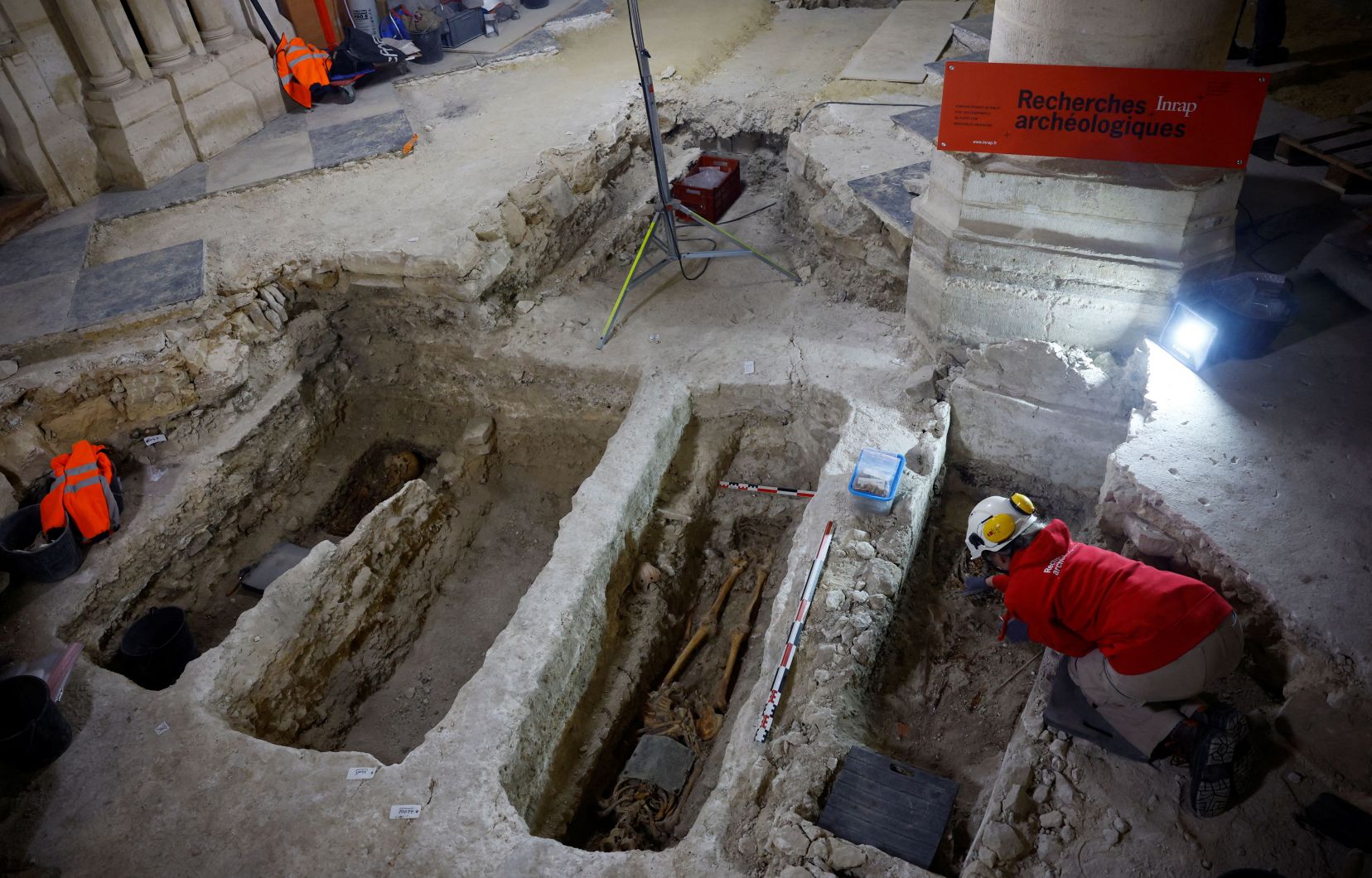Archaeological excavations at Notre-Dame de Paris have uncovered a grave that could be that of French poet Joachim du Bellay, who is known to have been buried in the cathedral, although the exact location is unknown, researchers said at a press briefing on Tuesday.
During excavations carried out as part of the reconstruction of Notre-Dame, archaeologists from the French National Institute for Preventive Archaeological Research (INRAP) found two anthropomorphic lead sarcophagi at the crossing of the transept in 2022.
One of the two sarcophagi, which bore an epitaph, was quickly identified as that of Canon Antoine de La Porte (1627-1710). But the identity of the second individual, a man in his thirties, was mysterious.
Analyses carried out have enabled us to learn more about this unknown man: the deformation of his coxal bone indicates that he rode a horse, his sawn-off skull and fractured sternum show that he was autopsied before being embalmed… Above all, his bones bear traces of an extremely rare pathology: cervical bone tuberculosis which led to chronic meningitis.
A “robot portrait” which corresponds to that of the famous Renaissance poet Joachim du Bellay.
“He was a skilled horseman, he went from Paris to Rome on horseback, which is no small feat when you have tuberculosis like he did. He almost died from it,” explained Éric Cubrézy, doctor and archaeologist.
The co-founder of the Pléiade — a group of poets but also a French literary movement — died in Paris on the night of 1er on January 2, 1560 at the age of 37 in the cloister of Notre-Dame.
The family of the author of the collection of sonnets The Regretswhose uncle was a cardinal, had asked that he be buried in the Saint-Crépin chapel. But in 1758, during work, his tomb was not found there.
“There are still doubts,” however, tempered Christophe Besnier, one of those responsible for the excavations at Notre-Dame.
